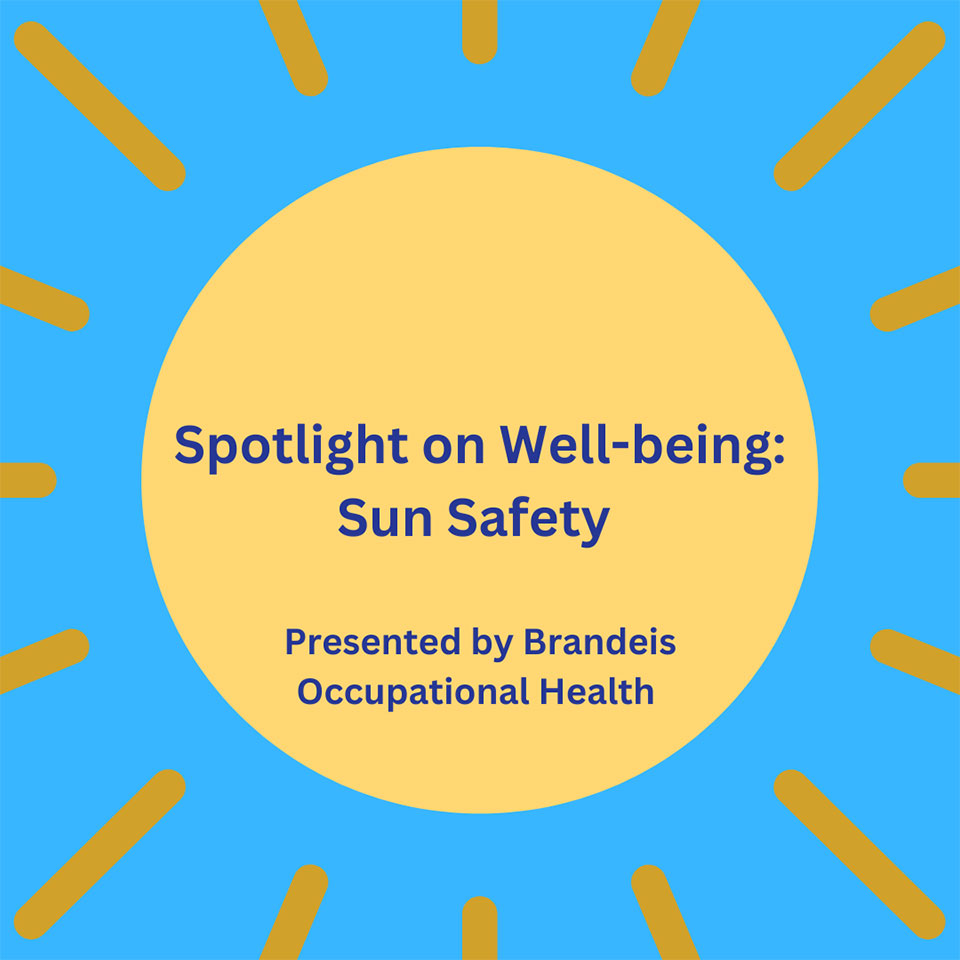Spotlight on Well-Being: Sun Safety
 Let's enjoy the summer sun safely. While some some sun exposure is needed for vitamin D production, overexposure to ultraviolet (UV) radiation from the sun can result in sunburn, as well as lead to more serious health problems, including skin cancer, premature aging of the skin, cataracts and other eye damage, and immune system suppression. Take a moment to review ways to keep yourself safe and healthy this summer.
Let's enjoy the summer sun safely. While some some sun exposure is needed for vitamin D production, overexposure to ultraviolet (UV) radiation from the sun can result in sunburn, as well as lead to more serious health problems, including skin cancer, premature aging of the skin, cataracts and other eye damage, and immune system suppression. Take a moment to review ways to keep yourself safe and healthy this summer.
Sun Safety Tips
The U.S. Environmental Protection Agency (EPA) recommends the following action steps to help you be sun safe:
- Do not burn: Sunburns significantly increase one's lifetime risk of developing skin cancer, especially for children.
- Avoid sun tanning and tanning beds: UV radiation from tanning beds and the sun causes skin cancer and wrinkling.
- Generously apply sunscreen: Generously apply about one ounce of sunscreen to cover all exposed skin 15 minutes before going outside. Sunscreen should have a sun protection factor (SPF) of at least 15 and provide broad-spectrum protection from both ultraviolet A (UVA) and ultraviolet B (UVB) rays. Reapply every two hours, even on cloudy days, and after swimming or sweating.
- Wear protective clothing: Wear protective clothing, such as a long-sleeved shirt, pants, a wide-brimmed hat, and sunglasses, when possible.
- Seek shade: Seek shade when possible, and remember that the sun’s UV rays are strongest between 10 a.m. and 4 p.m.
- Use extra caution near water, snow, and sand: Water, snow, and sand reflect the damaging rays of the sun, which can increase your chance of sunburn.
- Check the UV index: The UV index provides important information to help you plan your outdoor activities in ways that prevent sun overexposure. The UV index forecast is issued daily by the National Weather Service and EPA.
- Get vitamin D safely: Get Vitamin D safely through a diet that includes vitamin supplements and foods fortified with Vitamin D. Don't seek the sun.
Understanding the UV Index
The UV index forecasts the strength of UV rays each day. If the UV index is three or higher in your area, protect your skin from too much exposure to the sun.
Understanding Sun Protection
Sunscreens are topical preparations containing filters that reflect or absorb radiation in the ultraviolet (UV) wavelength range. The sun protection factor (SPF) measures the sunscreen's ability to protect against a sunburn reaction. Only sunscreen products that pass the FDA's test for protection against both UVA and UVB rays will be labeled as "broad spectrum."
All individuals, regardless of skin color, are subject to the potential adverse effects of ultraviolet (UV) radiation and will benefit from sunscreen use. However, sunscreens are especially useful for individuals with light skin who are more susceptible to sunburn, photoaging, and skin.
The American Academy of Dermatology recommends the choice of sunscreen products that have sun protection factor (SPF) of 30 or higher, broad-spectrum coverage, and water or sweat resistance. Sunscreens must be applied liberally, repeatedly, and to all sun-exposed parts of the skin to provide effective protection.
The Teaspoon Rule: Apply approximately one teaspoon of sunscreen to the face and neck area, a total of two teaspoons to the front and back torso, one teaspoon to each upper extremity, and two teaspoons to each lower extremity. Sunscreens should be applied 15 to 30 minutes before sun exposure to allow the formation of a protective film on the skin. Reapplication at least every two hours is necessary.
Sun-safe clothing is another effective way to avoid UV radiation. It's one of the simplest way to stay safe and you never need to reapply.